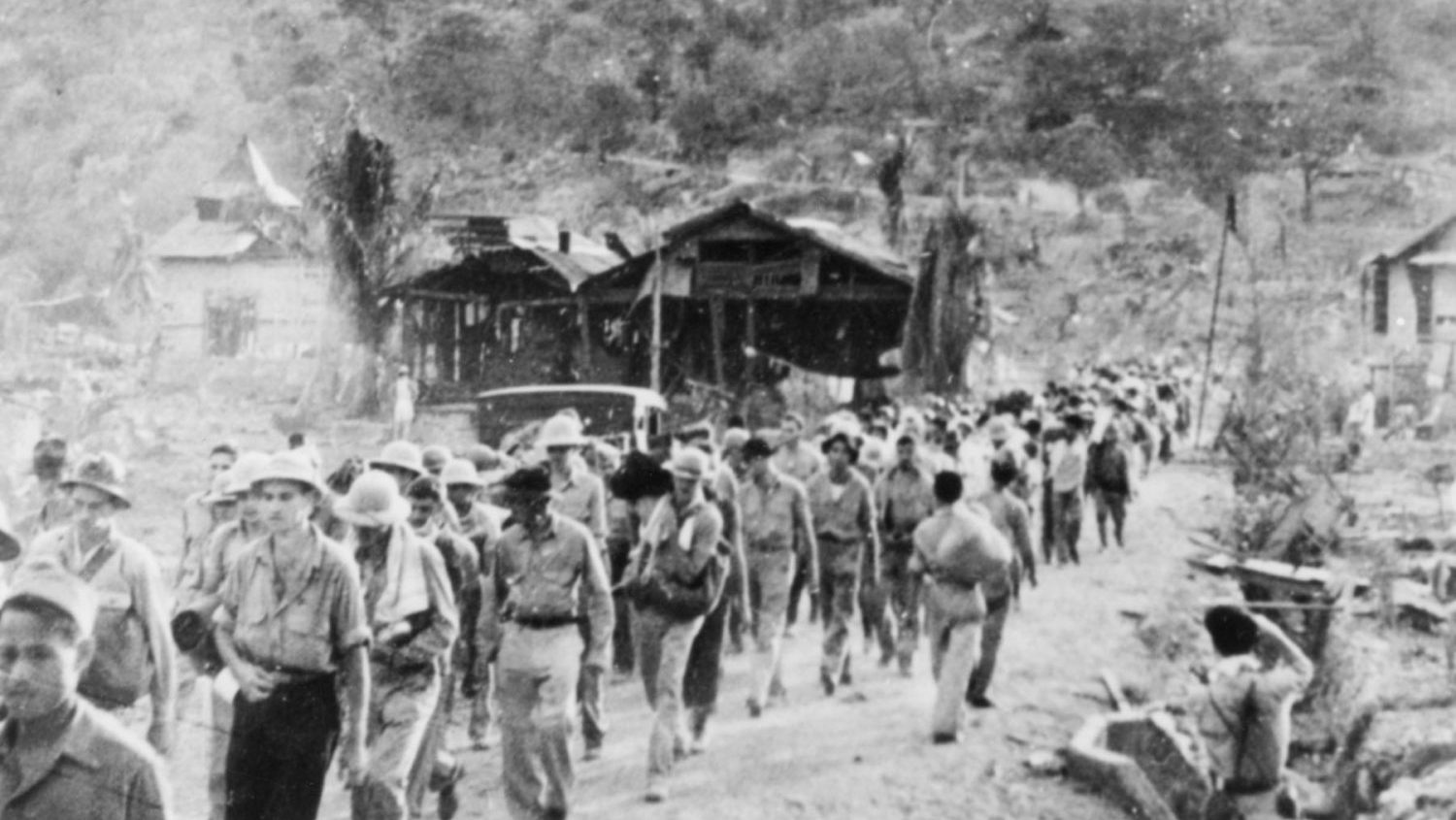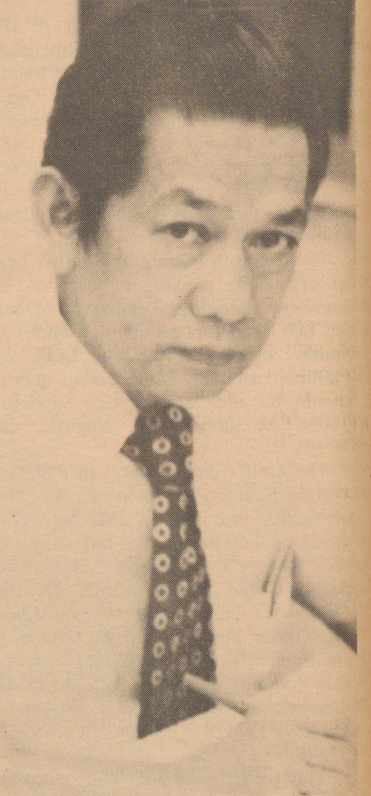#FlashbackFriday: The Exchange Associate Who Was a Bataan Death March Survivor

April 9 will mark the 82nd anniversary of the beginning of the Bataan Death March, the forcible 65-mile march of 60,000 to 80,000 American and Filipino prisoners of war to Japanese confinement camps throughout the Philippines during World War II. More than 1,000 Americans and 9,000 Filipinos died during the march.
One of the POWs who survived was Juan C. Aguas, an Exchange associate who told his story in the Exchange Post in December 1976, when he was a service specialist for the Philippines Guam Regional Exchange.
Aguas, who had more than 30 years of Exchange experience at the time, worked at Camp O’Donnell—which was the end point of the march and the site of a Japanese concentration camp where Aguas and his fellow Soldiers would be imprisoned.

Prisoners of war on the Bataan Death March. (U.S. Air Force photo/National Museum of the United States Air Force)
In mid-1942, Aguas was serving as a Philippine Soldier assigned to the 31st Division, U.S. Army, Far East.
“After we were taken prisoner,” Aguas said, “we were forced to march to the town of San Fernando, which was some 60 miles to the north. We were given very little to eat and no water. It was the middle of the Philippine dry season, when temperatures soar to over 100 degrees. It took us three days to make the journey.”
Thousands of prisoners died along the way from hunger, thirst, disease and at their captors’ hands. When the survivors reached San Fernando, they were crammed into railway boxcars and taken to the Capas railway station, where they were forced to walk an additional 2½ miles to the concentration camp.

A December 1976 Exchange Post photo of Juan C. Aguas, who worked for the Exchange for more than 30 years beginning in 1946 and was a Bataan Death March survivor.
Aguas said that water wasn’t made available to the prisoners when they arrived at Capas, where they had to buy it from bystanders for five pesos (the equivalent of 75 cents at the time) per small canteen. Aguas, who didn’t have money for the water, saw a familiar face in the crowd at the station. When Aguas got the man’s attention, the man threw him a pack of cigarettes.
“I was able to trade some of those cigarettes for a canteen of fresh drinking water,” Aguas told the Exchange Post. “I’ll never forget that man.”
Aguas said that more 400 people died daily inside the camp, from starvation, dehydration or disease. “Sanitation was terrible,” he said. “All they gave you to eat was rice and once a week you got a small piece of carabao (water buffalo) meat.”
In 1945, U.S.-Filipino forces recaptured the Philippines and freed captive Soldiers from concentration camps.
After World War II ended, Aguas reported for military duty and was assigned to the 11th Infantry Division. In 1946, he received an honorable discharge. Four days later, he started his Exchange career. Retirement information for him was unavailable but he had a long Exchange career.
The Exchange’s history in the Philippines dates to 1903, but post exchanges were closed in World War II after Japan invaded the country. After operations resumed in 1945, the Exchange maintained a presence in the Philippines until early 1992.
Since 2017, the Exchange has supported the Bataan Memorial Death March, an annual commemoration that takes place in southern New Mexico. Associates from the Fort Bliss and White Sands Missile Range stores, as well as from Corporate Communications, support the tribute, in which thousands of people trek 26 miles through high desert to honor the fallen from the Bataan Death March.
Source: Exchange Post archives, Bataan Memorial Death March official website (www.bataanmarch.com)


Juan was my assistant when I was assigned to the Philippine Regional Exchange (PRE) in the early 70’s. He was a fine employee, patriot and … most importantly … Man. Juan and I … along with many others … witnessed the return of our Vietnam POWs to Clark Air Force Base. His loyalty and dedication to AAFES was exemplary.
Wow, Jim. Thanks for adding your memories to this.
Vr,
Robert Philpot
The Exchange Post
Amazing story, thank you for sharing a piece of history about a fellow Exchange associate. Thank you, Jim James, for sharing your memories about Juan. This is a very touching story.